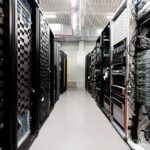In today’s interconnected world, networks serve as the backbone of modern businesses and communication systems. From small local networks to large-scale enterprise infrastructures, maintaining a robust and reliable network is essential for seamless operations. However, network maintenance comes with its own set of challenges that network administrators must navigate to ensure optimal performance, security, and scalability. In this article, we will delve into the most common network maintenance challenges, their implications, and strategies to overcome them.
The importance of network maintenance
Network maintenance involves the continuous monitoring, management, and troubleshooting of network components to ensure they function smoothly and securely. Proper maintenance is crucial for several reasons:
– Performance. Regular maintenance enhances network performance, reducing latency and ensuring efficient data transfer.
– Security. Maintaining the network’s security posture helps prevent unauthorized access, breaches, and data leaks.
– Reliability. Well-maintained networks experience fewer outages and downtime, ensuring uninterrupted operations.
– Scalability. Proper maintenance supports the network’s ability to accommodate growth and new technologies.
– Compliance. Adhering to legal regulations and industry standards requires consistent network monitoring and updates.
Common network maintenance challenges
1.1 Hardware issues
Networks rely on various physical components, including routers, switches, and cables. Hardware failures, such as malfunctioning switches or physical connectivity issues, can disrupt network operation. Identifying and replacing faulty hardware quickly is essential to prevent extended downtime.
1.2 Software challenges
Operating systems, firmware, and software applications running on network devices need to be regularly updated to address security vulnerabilities and improve functionality. However, updates can sometimes introduce compatibility issues or unexpected errors that impact network stability.
1.3 Network security concerns
Network breaches are a constant threat, and maintaining a robust security posture is a top priority. Network administrators need to implement access controls, firewalls, intrusion detection systems, and encryption protocols to safeguard against unauthorized access, data breaches, and cyberattacks.
1.4 Performance optimization
Network performance issues can arise due to congestion, bandwidth limitations, or misconfigured devices. Monitoring and optimizing network traffic and bandwidth usage are crucial to ensure smooth data flow and efficient resource utilization.
1.5 Scalability and future-proofing
As businesses grow, their network requirements evolve. Designing and maintaining a network that can scale seamlessly without compromising performance or security is a significant challenge. Anticipating future needs and planning for scalability is essential to avoid costly overhauls down the line.
1.6 Network documentation and management
Creating comprehensive network documentation that outlines device configurations, IP addresses, and network topology is often overlooked but critical for troubleshooting and making informed decisions. Proper network management tools are necessary to maintain accurate documentation and streamline administrative tasks.
1.7 Human factors
Network administrators play a pivotal role in maintenance, and their knowledge and skills significantly impact network reliability. High turnover rates or a lack of experienced administrators can lead to inconsistencies, configuration errors, and overall network instability.
Solutions and strategies
To address these challenges effectively, network administrators can employ several strategies:
– Regular monitoring. Implement network monitoring tools to detect performance issues and security threats promptly.
– Patch management. Establish a well-defined process for updating software and firmware to mitigate security vulnerabilities.
– Network segmentation. Divide the network into segments to contain potential breaches and limit their impact.
– Configuration management. Maintain accurate configuration records and adopt automated configuration management tools.
– Security protocols. Enforce strong access controls, encryption, and authentication mechanisms to protect the network.
– Capacity planning. Regularly assess network capacity and plan for future growth by scaling resources as needed.
– Training. Invest in training and retaining skilled network administrators to ensure proper management and maintenance.
– Documentation. Create and maintain up-to-date network documentation that aids troubleshooting and decision-making.
Network maintenance is a continuous and intricate process that requires vigilant attention to detail. The challenges mentioned, from hardware issues to security concerns, can have far-reaching implications on business operations. By proactively addressing these challenges through monitoring, updating, proper configuration, and expert management, organizations can ensure the reliability, security, and scalability of their network infrastructures. In an ever-evolving technological landscape, a well-maintained network remains a cornerstone of success and efficiency.
Contact Evernex today to discover how we can help you drive business continuity and operational excellence with our cost-effective network maintenance solutions.




